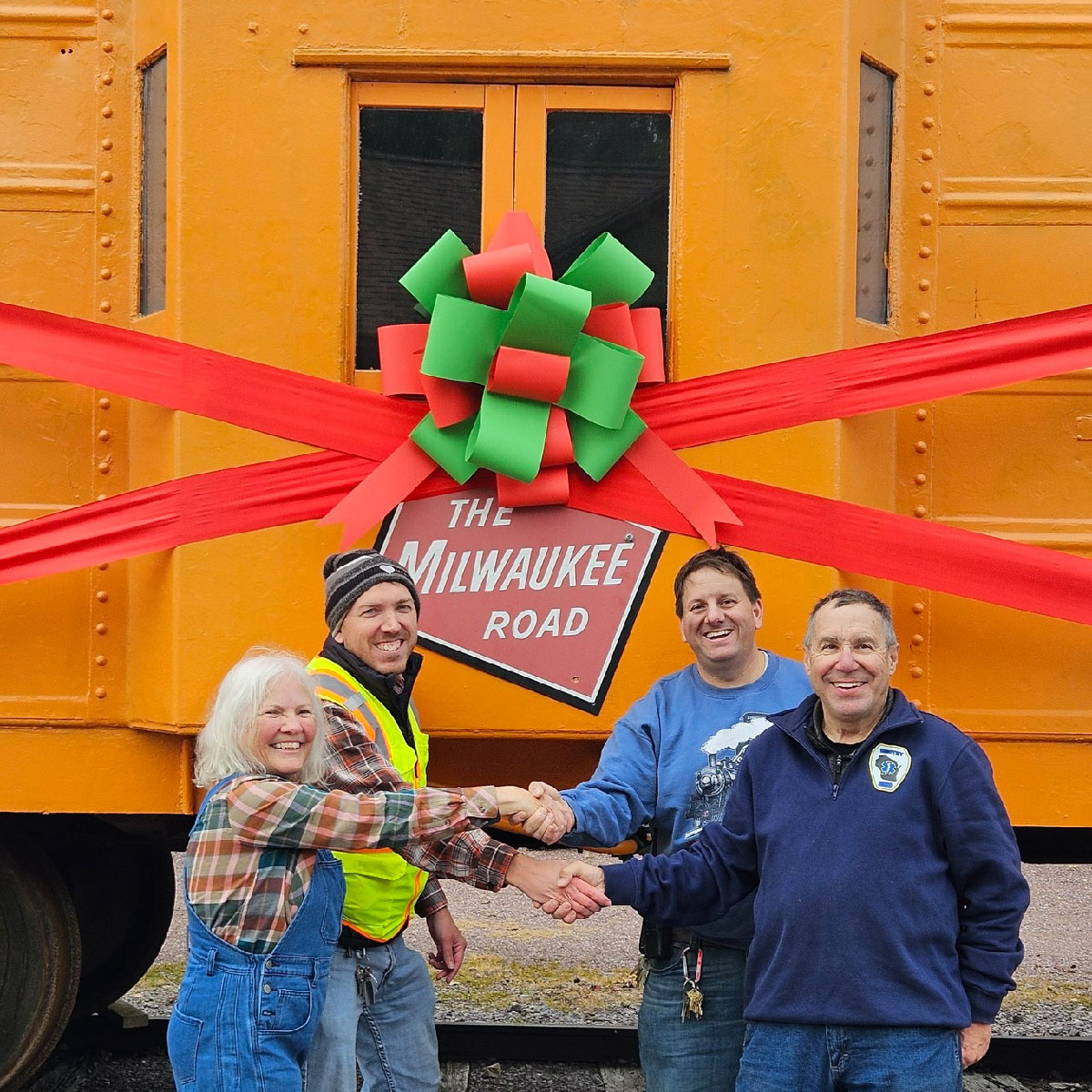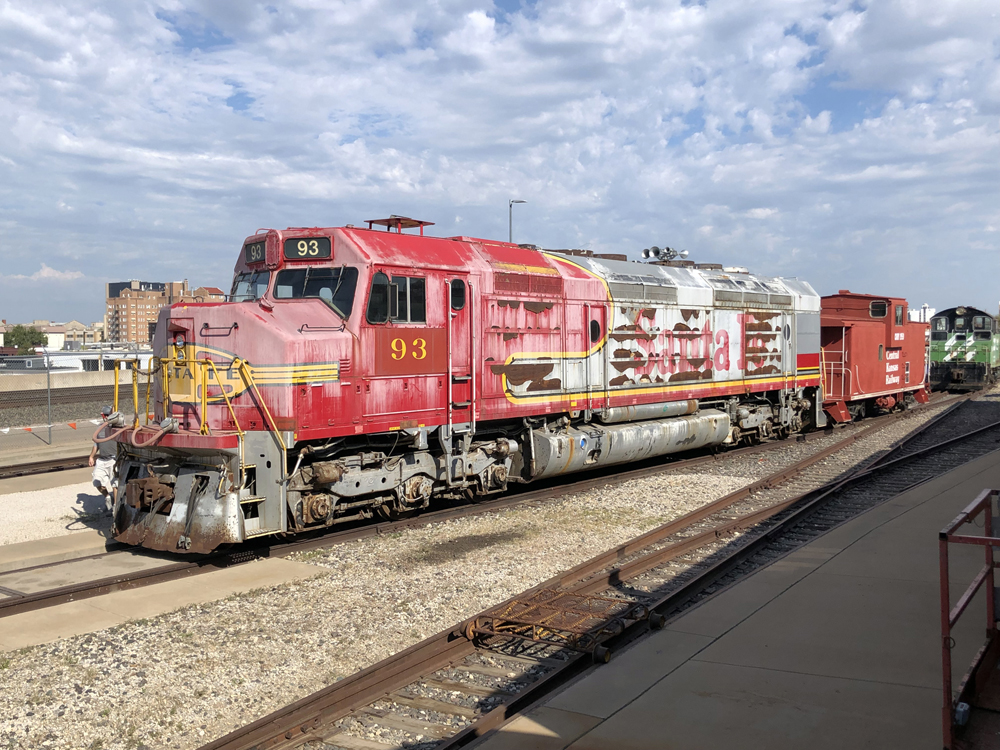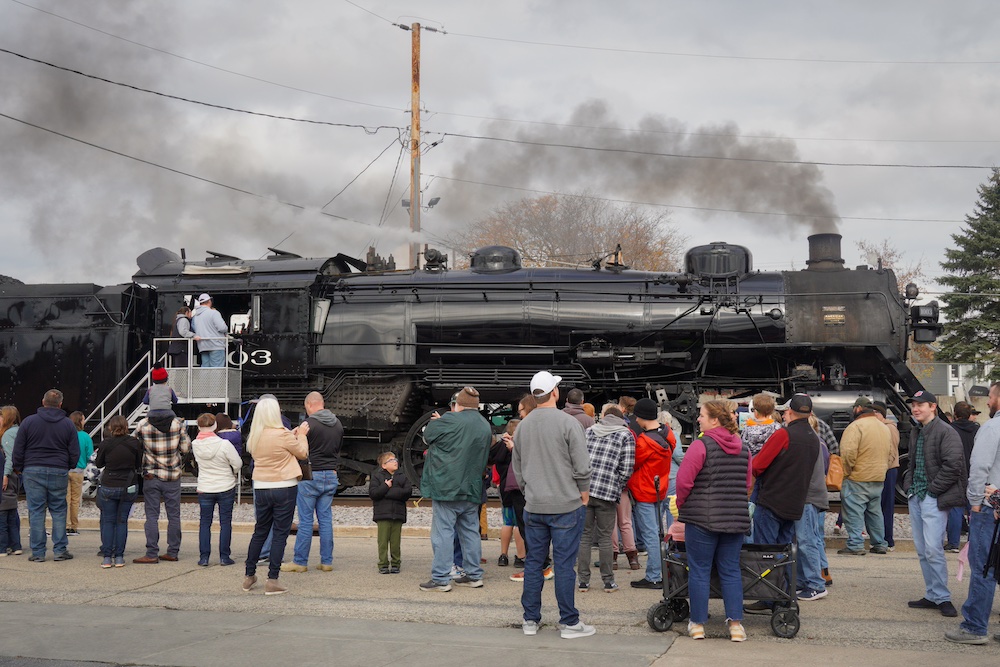The mine produced more than 10 million tons of uranium ore worth more than $1 billion between 1956 and 1988 to help fuel nuclear power plants and fill nuclear munitions. The federal government will spend $300-$400 million to remove and remediate the giant tailings mound adjacent to the former mill site.
The U.S. Department of Energy project, called the Moab Uranium Mill Tailings Remedial Action, was to be completed in 2028, but new legislation funds enable the DOE to be finished by 2019. By overwhelming public support, most of the material will be transported by rail on Union Pacific’s Cane Creek Subdivision.
Two processes will work simultaneously at the Moab site: a container filling process and a rail load-out process. First, empty containers will be loaded onto trucks in the contamination area and filled with roughly 40 tons of tailings material. The containers will then be sealed and placed on a survey rack where they are checked for radioactivity and decontaminated as necessary. Clean containers are then loaded onto trucks outside the contamination area for transport to the rail load area.
A 50-ton gantry crane will place the filled containers onto railcars and take emptied containers off the inbound train onto waiting trucks to return to the support area to be transferred across the contamination area boundary, de-lidded, and prepared for refilling. The truck will then be loaded with another full clean container and return to the rail load area. This way, trucks won’t have to be decontaminated with each load. The gantry crane will move along the siding from one end of the train to the other, replacing empty containers with loaded ones.
Once the railcars arrive at the new siding just east of the existing Brendel siding at Crescent Junction, the containers will be off-loaded onto off-road trucks for movement to an open area of the engineered disposal cell. The storage area is near a mile long and 2,400 feet wide; it was designed to isolate the tailings for a period of up to 1,000 years, and for at least 200 years.
Utilizing 89-foot articulated railcars and with 10,000 feet of new continuous welded rail and two new sidings, there will generally be one train per day moving between Moab and Crescent Junction. Working six days a week, starting with 22 railcars then adding 12 more by the end of the year, with each car hauling four containers, 312 trains will carry 42,432 containers each year (5,440 tons of material/day) for 10 years to move the entire pile.
The big unknown is what workers will find as they dig down. The material will have to be dried prior to transport and it is described as “pudding-like,” with various layers.
The rail line north of Moab passes beside Arches National Park through some of the most stunningly colored and carved sandstone on earth.
SANDY LONSDALE is a freelance writer and photographer who lives in Moab, Utah.














